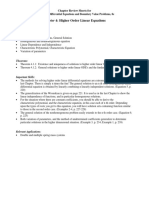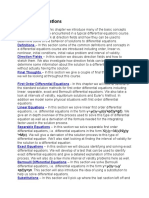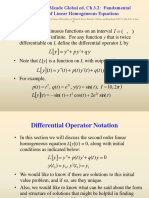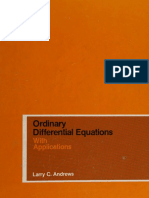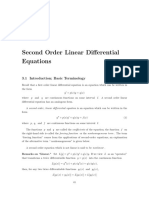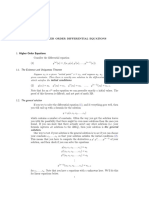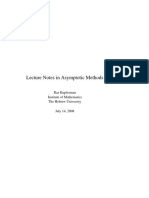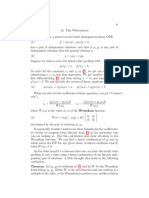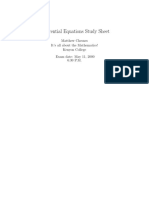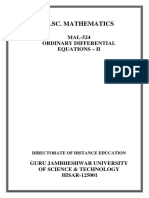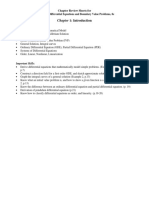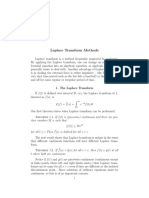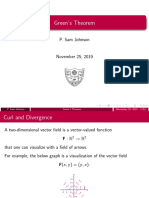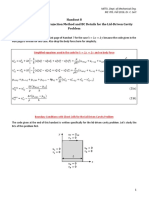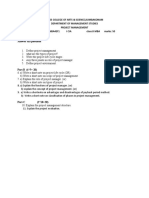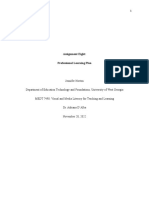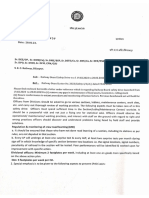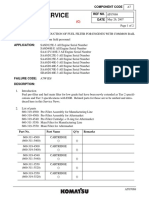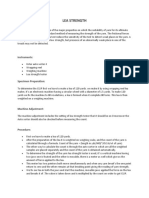Chapter Review Sheets for
Elementary Differential Equations and Boundary Value Problems, 8e
Chapter 3: Second Order Linear Equations
Definitions:
• Linear and nonlinear
• Homogeneous, Nonhomogeneous
• Characteristic Equation Wronskian
• General Solution, Fundamental Set of Solutions
• Principle of superposition (p. 145)
• Linear Independence
• Particular Solution
• Method of undetermined solutions
• Period, Natural Frequency, Amplitude, Phase
• Overdamped, Critically Damped, Underdamped
• Resonance
• Transient Solution, Steady-State Solution or Forced Response
Theorems:
• Theorem 3.2.1: Existence and uniqueness of solutions to )'"+ p(l) y.+q(t)y ~ g(t) Y(to)
= Ya Y"(to } = Yo
• Theorem 3.2.2: Principle of superposition. If Yi and Y2 are solutions to so is C, Y, + c2 Y2 for any
constants c' and c2 .
• Theorem 3.2.3: Finding solutions to Eq. (2) an Eq. (3), using the Wronskian at the initial
conditions.
• Theorem 3.2.4: Representing general solutions to second order linear homogeneous GDE's
• Theorem 3.2.5: Existence of a fundamental set of solutions.
• Theorem 3.3.1: Linear independence of functions and the Wronskian.
• Theorem 3.3.2: Abel's Theorem.
• Theorem 3.3.3: Linear independence of solutions to y"+ p(t) Y. + q(t )Y = g(t)
and the Wronskian.
• Theorem 3.6.1: Relating differences in nonhomogeneous solutions to fundamental solutions
(Used to prove the following theorem.)
• Theorem 3.6.2: General solutions to linear nonhomogeneous QDE's.
• Theorem 3.7.1: General solutions to linear nonhomogeneous ODE's. (Using variation of
parameters to determine the particular solution.)
• Yp+p(t)Y'+q(t)y
Important Skills:
• Be able to determine if a second order differential equation is linear or nonlinear, homogeneous,
nonhomogeneous. (If it can be put into the form given by Equation (3) in page 130, it is linear.)
• Most of the Chapter deals with linear equations.
• Important exceptions are two methods given in Section 3.1 exercises 28-33, which show how t, solve
second order differential equations missing the dependent variable, and Exercises 34-39, which shows
how to solve equations missing the independent variable.
• Can you recognize a homogeneous equation with constant coefficients, and derive the characteristic
� Chapter Review Sheets for
Elementary Differential Equations and Boundary Value Problems, 8e
equation? (Example 3, p.147) This equation will be quadratic, so know the quadratic formula, the types
of solutions one gets; real and distinct, repeated, and complex conjugate. These three cases will crucial
to the types of solutions one gets to constant coefficient homogeneous differs equations.
• Be able to write down fundamental solution sets to homogeneous equations. This means find two
linearly independent solutions. You can use the Wronskian to show if two solutions are linearly
independent. (Example 3, page 147). Many times the Wronskian is the most convenient methods to
determine dependence.
• Reduction of order is a way to take a know solution and produce a second linearly independent. Know
it? (Example 3, p.171)
• What are the fundamental solution sets for each of the three case of roots when solving constant
coefficient equations? The summary is on p. 170. (Example 3, p.147; Example 2,p.169; Example 2
p.162)
• Solutions to second order nonhomogeneous equations have two components. There is the homogeneous
solution, and particular, or nonhomogeneous solution. (Theorem 3.6.2 p.176) To find particular
solutions you must know the method of undetermined coefficients, and variation of parameters.
(Example 4, p. 179; Example 1, p. 186)
• Mechanical vibrations give excellent examples for utilizing all the techniques in the Chapter. K the
difference between damped and undamped vibrations, forced and unforced situations.
• For the unforced case, if there is no dampening, the motion is sinusoidal. Be able to determine the
natural spring frequency. (Example 2, p.194) If there is dampening, know the three different kinds:
underdamped, critically damped, and overdamped, depending on roots to the characteristic equation. If
underdamped, know the quasi period. (Example 3, p.200) Know how to graph solutions in the three
different cases of dampening. For the forced problem, the cases separate into damped or undamped. If
undamped, there is the possibility of resonance if the nonhomogeneous forcing term is sinusoidal with
frequency equivalent to the natural spring frequency. (p. 214)
• If there is no resonance, then there will be beats. (p.213)
• Know how to derive and graph solutions in this case. You will need trigonometric identities in your
analyses.
• For the damped case, know how to identify and graph transient and steady state solutions. (p. 211)
Relevant Applications:
• Mechanical Vibrations, Electric Circuits

